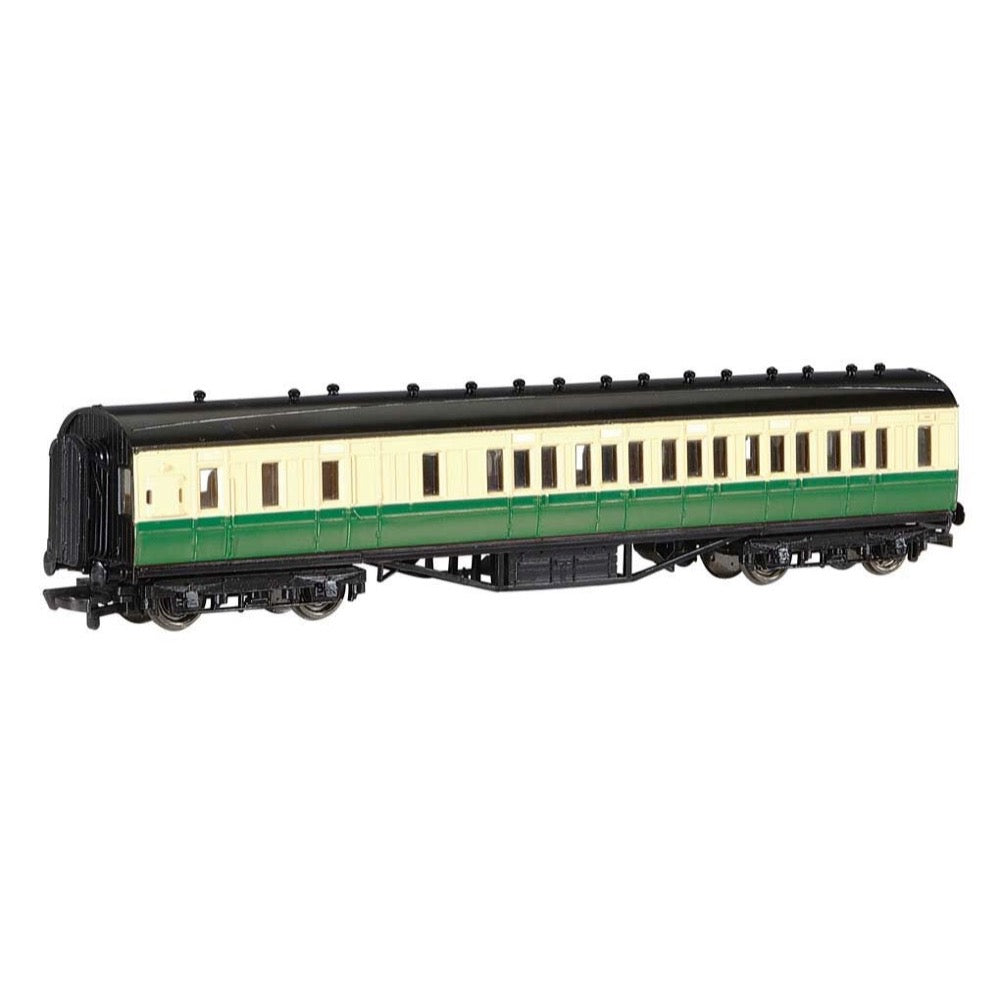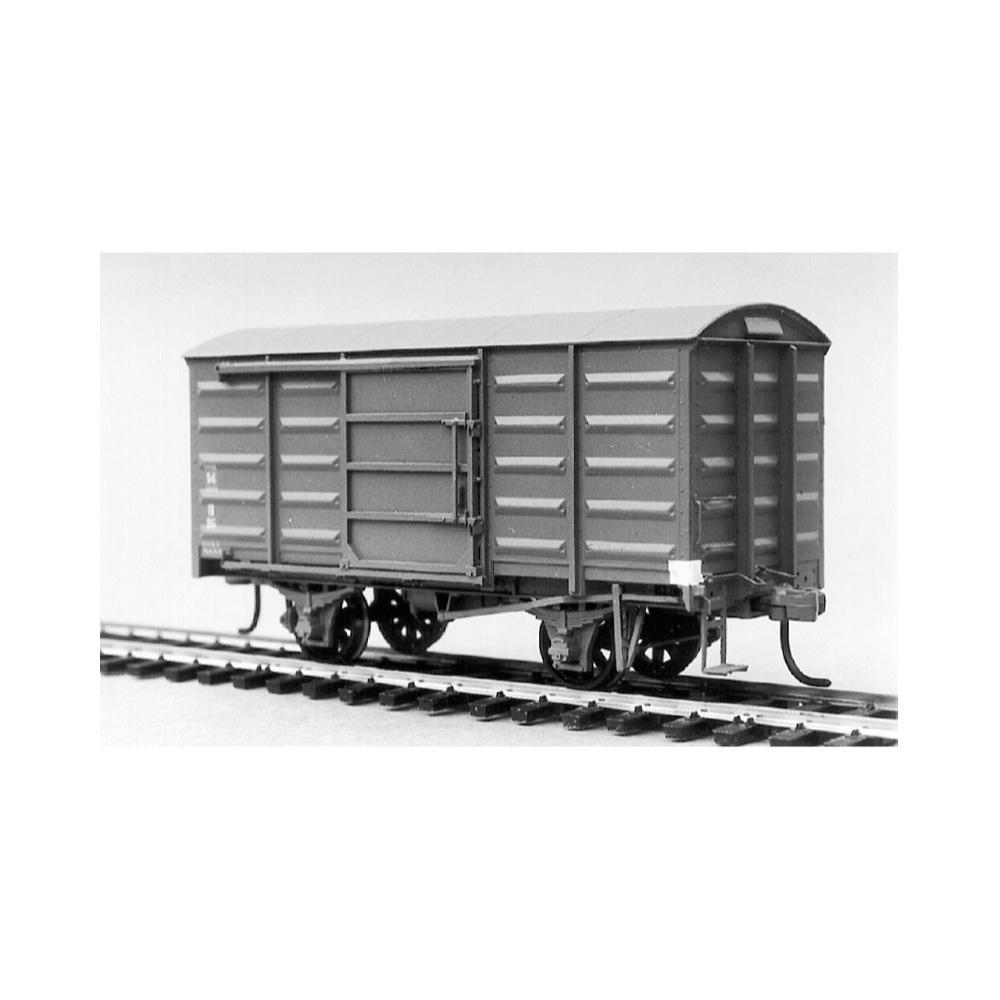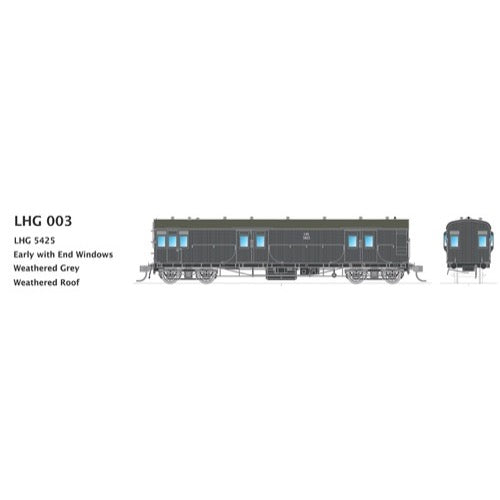
SDS Models LHG003 HO NSWGR Guardsvan LHG 5425 Early Windows Weatherd Grey Weathered Roof
46.00
$
<p>160 of these 49’3” long vans were built by three different companies between 1915-16 through to 1921-22, all rode on 7’0” wheelbase bogies. Kilborn and Willick constructed 55 vans, Meadowbank Mfg Co constructed 55 vans and Clyde Eng 50 vans. All were built with end windows in the Guards section, these were later removed from about the 1940s.</p>
<p>They were coded LHG from delivery, some were coded OHG with screw couplings for passenger train working but reverted to LHG with auto couplers in the early 1960s.</p>
<p>100 vans were recycled with their underframes being shortened for the OHG programme, 18 were reused as W&W vehicles.</p>
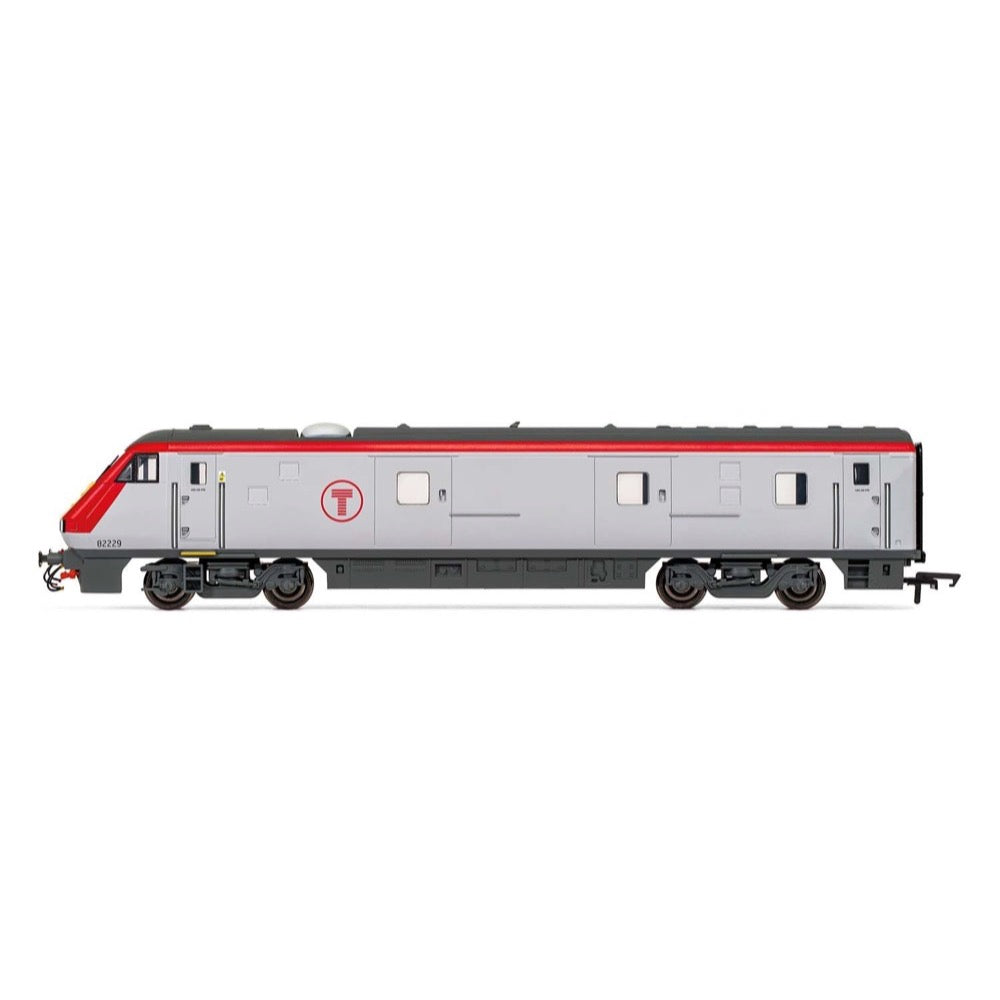
Hornby R40190 OO Transport for Wales Mk4 DVT
67.00
$
<p>Built at Metro-Cammell's Washwood Heath factory, 314 Mk4 coaches were produced between 1989 and 1992. They were built specifically for use on the newly electrified East Coast Main Line, along with hopes that a second order for the West Coast Main Line would be placed at a later date, although this second order never transpired. Mk4 coaches featured many improvements over the Mk3s such as push-button operated plug-type doors, fully sealed gangways and a designed top speed of 140mph. Much of the Mk4 design was based upon the Advanced Passenger Train. In particular, Mk4 coaches feature sides profiled to allow a tilt of up to 6° with newly fitted tilting bogies.</p>
<p>Mk4s entered service in 1989 and helped drive a significant increase in passenger traffic. With privatisation in 1996, all Mk4 coaches were sold to Evershot Rail Group who have since leased them out to the holder of the InterCity East Coast Franchise. The franchise was initially awarded to Great North Eastern Railway (GNER) and has since been operated by National Express East Coast, East Coast, Virgin Trains East Coast and London North Eastern Railway (LNER) owned by the Department for Transport.</p>
<p>Between October 2003 and November 2005 Bombardier Transportation, under contract from GNER, commenced refurbishment of the Mk4 stock, fitting new seating arrangements and introduced onboard Wi-Fi, a first for British rail services. This refurbishment programme was called 'Project Mallard' named after the Mallard steam locomotive, built in the 1930s by the London & North Eastern Railway and holder of the world speed record for steam locomotives.</p>
<p>Although Mk4 coaches have spent most of their lives on the ECML, there are plans to cascade them down to other lines due to the introduction of the Class 800 and Class 801 IEPs.</p>
<h3>Specifications</h3>
<ul>
<li>Item Length - Without Packaging (cm): 25.4</li>
<li>Item Height - Without Packaging (cm): 5</li>
<li>Item Width - Without Packaging (cm): 3.5</li>
<li>Item Weight - Without Packaging: 0.2</li>
<li>Item Scale: 1:76 Scale 00 Gauge</li>
<li>License: No</li>
<li>Finish: Painted</li>
<li>Colour: Grey</li>
<li>Gauge: OO</li>
<li>Operator: Transport for Wales</li>
<li>Designer: Met Cam</li>
<li>Livery: Transport for Wales</li>
<li>Minimum Curve (mm): Radius 2</li>
<li>Number of Parts: 1</li>
</ul>
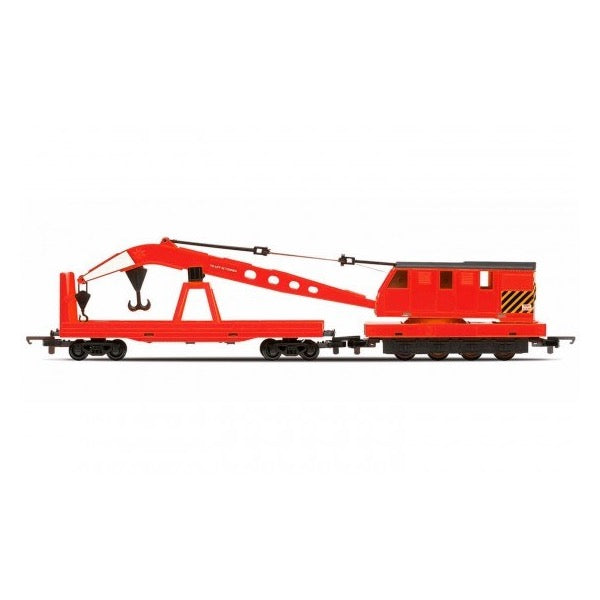
Hornby R6881 OO Breakdown Crane Era 5
33.00
$
<p>The Breakdown Crane - Era 5 model has a red painted finish and and measures at 250mm.If your layout involves a country area or plenty of rock and grass accessories then this crane will make an excellent addition to the scenery!</p>
<h3>Specification</h3>
<ul>
<li>Item Length - Without Packaging (cm): 35.6</li>
<li>Item Height - Without Packaging (cm): 5</li>
<li>Item Width - Without Packaging (cm): 3.5</li>
<li>Item Weight - Without Packaging: 0.31</li>
<li>Item Scale: 1:76 Scale 00 Gauge</li>
<li>License: No</li>
<li>Finish: Painted</li>
<li>Colour: Red</li>
<li>Gauge: OO</li>
<li>Operator: British Railways</li>
<li>Livery: Red</li>
<li>Minimum Curve (mm): Radius 2</li>
<li>Number of Parts: 1</li>
</ul>
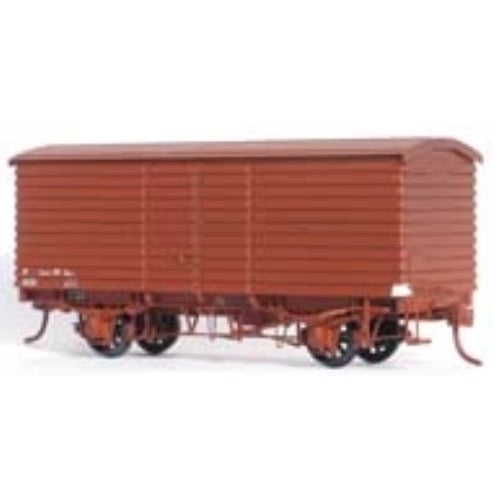
Steam Era Models R4L HO U Louvre Van Modernised Lever Handbrake 1956-90 Kit
10.00
$
<p>The U van was designed for the carriage of perishable goods, although other classes of goods could be carried under certain conditions. The vans represented by this kit were constructed at Bendigo Nth and Newport Workshops between 1938 and 1952 and numbered 1217 to 1466. They featured a 7' 0” wide doorway each side, corrugated iron double roof and lever style handbrake. During the mid to late 1960s the mechanical advantage of the handbrake was increased, by changing the attachment point for the pushrods from above each brake shoe to below.</p>
<p><em>Models illustrated has been fitted with couplers (not included).</em></p>
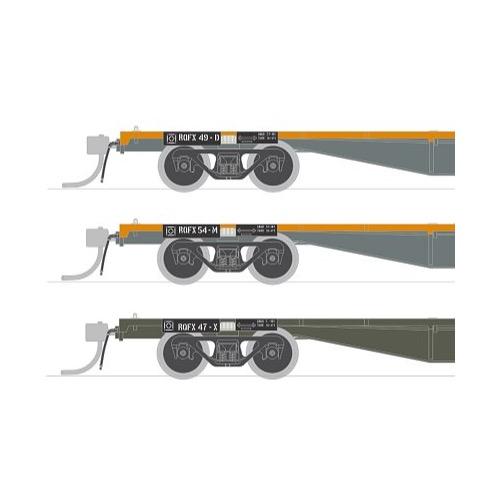
SDS Models HO National Rail RQFX Container Wagon 3 Pack B
73.00
$
<h3>QMX 63' CONTAINER WAGON</h3>
<p>These containers wagons were a continuation of the basic design of the earlier VR FQX 63’ wagon, the exception being, they were built with a skeletal deck.</p>
<p>60 wagons were built in 1978, 1 – 40 at the VR Bendigo Workshops and 41 – 60 at the VR Newport Workshops. These were the last VR wagons to enter service prior to the adoption of the ROA 4 letter coding in 1979.</p>
<p>They were suitable for bogie exchange and later all went into the NRC pool in 1995, the majority were fitted with 2CM high speed bogies and became RQFY coded wagons.</p>
<h3>Model Features:</h3>
<ul>
<li>Highly detailed Ready-to-Run HO scale model</li>
<li>Injection moulded high quality plastic body</li>
<li>Diecast metal underfloor centre beam</li>
<li>Full brake rigging and underfloor detail</li>
<li>Semi scale 10.5mm diameter metal rimmed wheels</li>
<li>Genuine Kadee scale head whisker coupler</li>
<li>18” Minimum radius recommended</li>
</ul>
<br>
<h3>Photos shown are representative of the finished model. Numbers and colours may vary on final product.</h3>

Hornby R60189 OO 3 Plank Wagon E. Marsh Era 3
16.00
$
<p>The open wagon is one of the most ubiquitous types of wagon to ever see service in the UK. Regardless of their size, the wagons could be seen almost anywhere from individual wagons being moved by small tank engines to large rakes of them being hauled behind some of the largest tender engines of the day.</p>
<p>The wagons were largely unspecified, they would carry any cargo that didn't require any protection from the elements. As time progressed and rolling stock developed, the general use wagon would see its use become more limited, wagons designed specifically around their cargo would begin to supersede the standard open wagon through the 1940s and 1950s.<br>Many open wagons would find their way into private ownership, with each company then commissioning one of the Big Four companies to move their wagons to their destination. This 3 plank wagon is typical of the kind that could be seen making up a colourful patchwork behind one of the Big Four's freight engines.</p>
<p>This open wagon is fitted with NEM couplings and metal wheels, allowing it to roll freely and therefore allowing wagons to run in long rakes behind even small locomotives as may sometimes be tasked with hauling them. This wagon also has internal plank detailing, a load need not be fitted if you do not wish to add one.</p>
<h3>Specification</h3>
<ul>
<li>Item Length - Without Packaging (cm): 7.1</li>
<li>Item Height - Without Packaging (cm): 2.5</li>
<li>Item Width - Without Packaging (cm): 3.5</li>
<li>Item Weight - Without Packaging: 0.02</li>
<li>Item Scale: 1:76 Scale 00 Gauge</li>
<li>Finish: Painted</li>
<li>Colour: Grey</li>
<li>Gauge: OO</li>
<li>Operator: Private Owner</li>
<li>Designer: RCH</li>
<li>Livery: Private Owner</li>
<li>Minimum Curve (mm): Radius 2</li>
<li>Number of Parts: 1</li>
<li>Buffer Type: Fixed Metal Buffers</li>
<li>Coupling Type: NEM Tension Lock</li>
</ul>
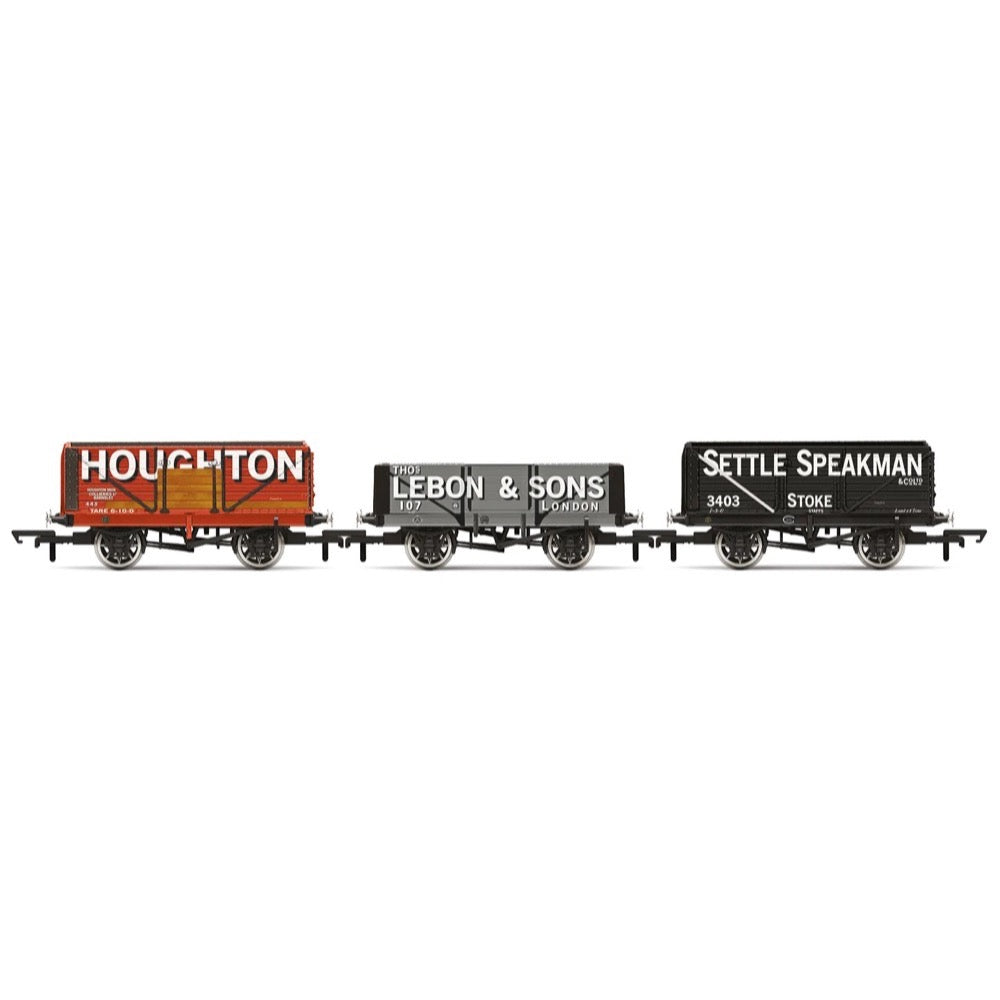
Hornby R60116 OO Triple Wagon Pack Houghton Main Thos. Lebon & Sons & Settle Speakman Era 3
40.00
$
<p>The open wagon is one of the most ubiquitous types of wagon to ever see service in the UK. Regardless of their size, the wagons could be seen almost anywhere from individual wagons being moved by small tank engines to large rakes of them being hauled behind some of the largest tender engines of the day.</p>
<p>The wagons were largely unspecified, they would carry any cargo that didn't require any protection from the elements. As time progressed and rolling stock developed, the general use wagon would see its use become more limited, wagons designed specifically around their cargo would begin to supersede the standard open wagon through the 1940s and 1950s.</p>
<p>Many open wagons would find their way into private ownership, with each company then commissioning one of the Big Four companies to move their wagons to their destination. These plank wagons are typical of the kind that could be seen making up a colourful patchwork behind one of the Big Four's freight engines.</p>
<p>These open wagons are fitted with NEM couplings and metal wheels, allowing them to roll freely and therefore allowing them to run in long rakes behind even small locomotives as may sometimes be tasked with hauling them. These wagons also have internal plank detailing, a load need not be fitted if you do not wish to add one.</p>
<h3>Specification</h3>
<ul>
<li>Item Length - Without Packaging (cm): 21</li>
<li>Item Height - Without Packaging (cm): 4</li>
<li>Item Width - Without Packaging (cm): 3.5</li>
<li>Item Weight - Without Packaging: 0.06</li>
<li>Item Scale: 1:76 Scale 00 Gauge</li>
<li>Finish: Painted</li>
<li>Colour: Multiple</li>
<li>Gauge: OO</li>
<li>Operator: Private Owner</li>
<li>Designer: RCH</li>
<li>Livery: Private Owner</li>
<li>Minimum Curve (mm): Radius 2</li>
<li>Buffer Type:Fixed Metal Buffers</li>
<li>Coupling Type: NEM Tension Lock</li>
<li>Number of Parts: 1</li>
</ul>
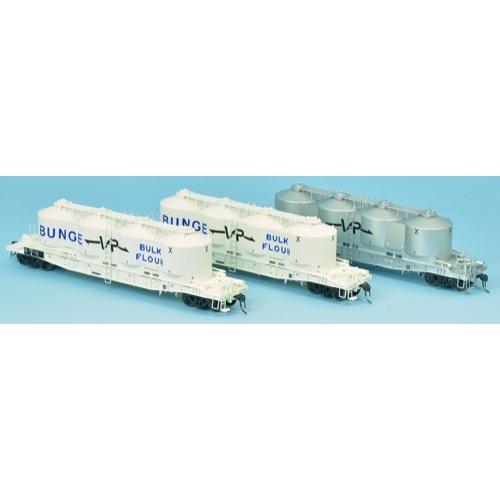
SDS Models VR FX Series 1 1970s Pack D
82.00
$
<h3>FX / VPFX Bulk Flour Wagon</h3><p>17 of these pneumatic discharge wagons were constructed between 1966 and 1971, they were numbered FX1 to 17. The first series FX 1 to 6 were built at Newport Workshops, the second series FX 7 to 17 were built at Ballarat North Workshops. The original series of wagons were designed so that two of the four hoppers were unloaded from each end. The second series differed from the first series by means of a single discharge point, via additional piping and manifold, at each end of the wagon. When the wagons were first delivered they were finished in silver with a small VR logo, later many of the series received flour company branding and some were also repainted white. Later their use was expanded to cover burnt lime (VPLX) and dried locomotive sand (VZGX).</p><p>Whilst coded FX denoting suitability for bogie exchange they were predominantly used on the broad gauge between Albury NSW and Williamstown Pier and Westall, in the mid-80s some ran on standard gauge to Enfield and Canberra.</p><h3>Model Features:</h3><ul>
<li>Highly detailed Ready-to-Run HO scale model</li>
<li>Injection moulded high quality plastic body</li>
<li>Etched metal walkways</li>
<li>Full brake rigging and underfloor detail</li>
<li>Semi scale metal rimmed wheels</li>
<li>Genuine Kadee #158 whisker coupler</li>
<li>18” Minimum radius recommended</li>
</ul>
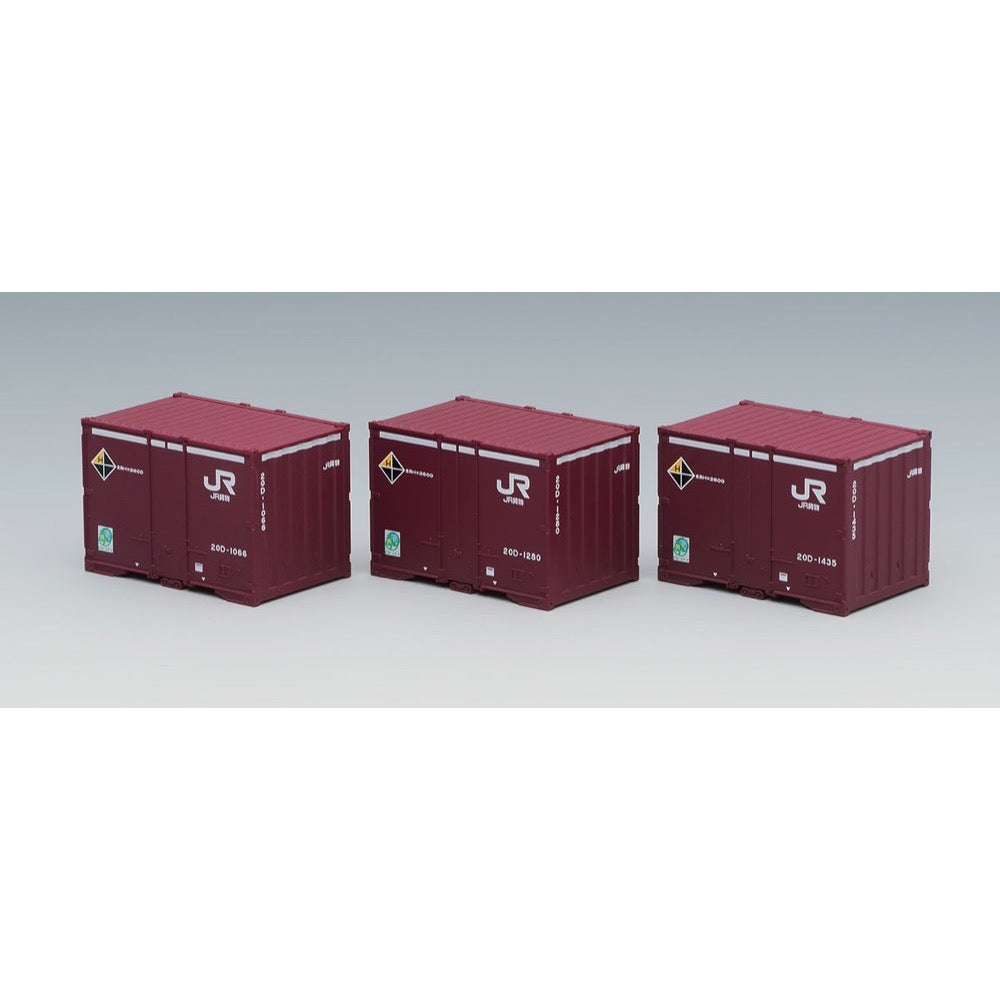
Tomix 3168 N 20D Container additional equipment type
7.00
$
<h3>The 20D container is a JR container that began production in 2006.</h3>
<p>It features a larger top and bottom dimension than the conventional general-purpose 19D container, with a total height of 2600mm.</p>
<p>With the end of operation of the Koki 50000 series, the operational restrictions of the 20D container have been lifted, so the same shape has become the general-purpose container size.</p>
<p>Since 2018, new additional models with a revised design have been manufactured.</p>
<h3>Features</h3>
<ul>
<li>A new reproduction of the 20D container that was added in 2018</li>
<li>Container numbers (20D-1066, 1280, 1435) are printed</li>
<li>Hello mark and Ecorail mark are printed</li>
<li>3 pieces included</li>
</ul>
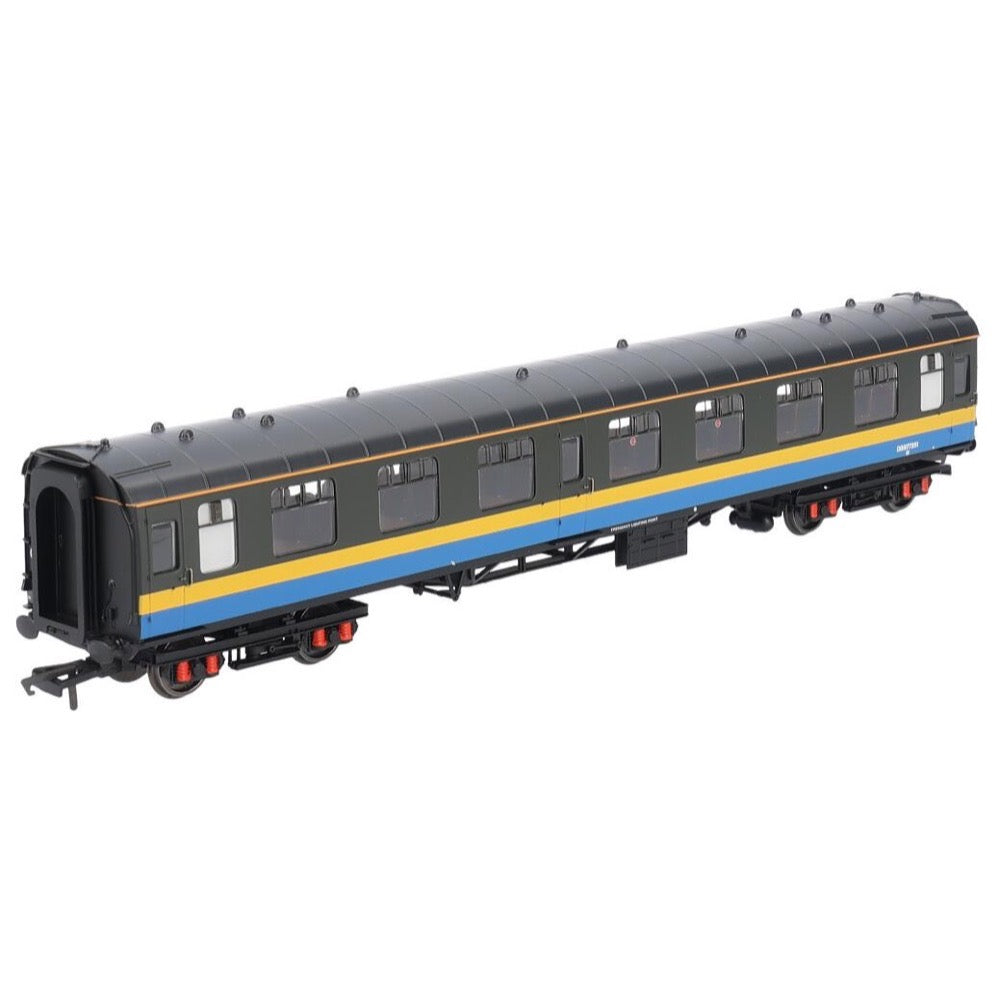
Hornby R40346 OO BR Departmental exMk1 First Open DB977351
32.00
$
<p>The first standardised railway carriage design built by British Railways, the Mk 1 Coach introduced in 1951 could be found across Britain's railway network and continued to be produced until 1963, and even later in the form of multiple units and non-passenger stock. Along with being widely deployed, Mk1 Coaches were built in various places including Derby, Doncaster, Eastleigh, Swindon, Wolverton and York.</p><p>Most Mk1 Coaches had 63ft 5in long underframes with 64ft 6in long bodies, although some were built shorter to be used on tighter curves where large overhangs would otherwise have prohibited running. In 1977 a reduction in the number of fatalities on British railways since 1955 was attributed to the introduction of the Mk1 Coaches due to their steel build, strong underframe, and buckeye couplings making them far safer in the event of an accident.</p><p>Mk1 Coaches started to be withdrawn from widescale service in the 1990s, although in some regions, particularly in the south, Mk1 base multiple units continued to be used well into the 2000s. Network Rail continue to use modified Mk1 Coaches for various departmental duties and rail tour operators continue to use Mk1 Coaches on specially organised services.</p><p>The Mk1 BCK is a Mk1 Brake Composite Corridor coach meaning seating is split into compartments connected by a corridor on one side. The coach provided both first- and second-class compartments. Along with passenger seating this coach also houses a compartment containing equipment used to help brake the train.</p><h3>Specifications</h3><ul>
<li>Item Length - Without Packaging (cm): 26.5</li>
<li>Item Height - Without Packaging (cm): 4.5</li>
<li>Item Width - Without Packaging (cm): 9</li>
<li>Item Weight - Without Packaging: 0.25</li>
<li>Item Scale: 1:76 Scale 00 Gauge</li>
<li>Finish: Painted</li>
<li>Colour: Multi</li>
<li>Operator: BR Departmental</li>
<li>Designer: BREL</li>
<li>Livery: BR Departmental</li>
<li>Minimum Curve (mm): Radius 1</li>
<li>Number of Parts: 1</li>
</ul>


